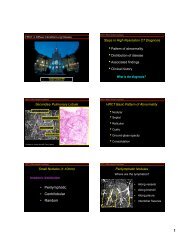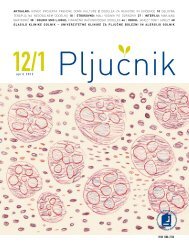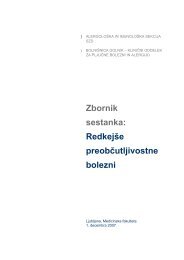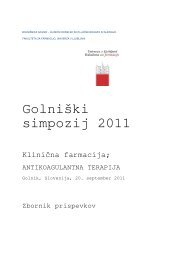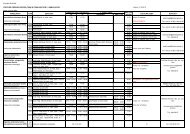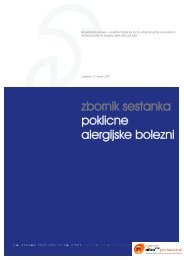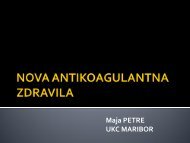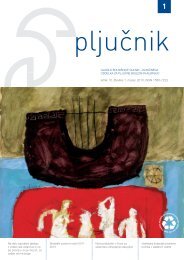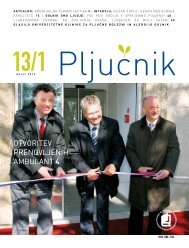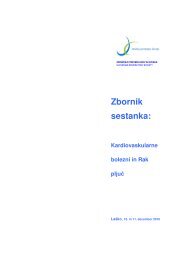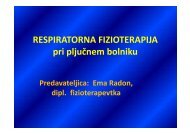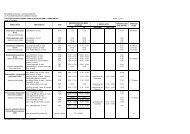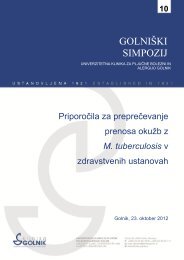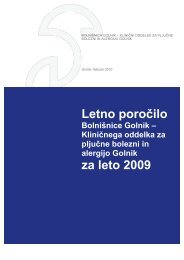Golniški simpozij 2011 Zbornik povzetkov
Golniški simpozij 2011 Zbornik povzetkov
Golniški simpozij 2011 Zbornik povzetkov
You also want an ePaper? Increase the reach of your titles
YUMPU automatically turns print PDFs into web optimized ePapers that Google loves.
Use of multiplex PCR for detection of<br />
bacterial respiratory tract pathogens<br />
Dane Luænik, Judit Stokiå, Viktorija Tomiœ, Franc Øifrer<br />
University Clinic of Respiratory and Allergic Diseases, Golnik<br />
Background<br />
To investigate the usefulness of multiplex polymerase chain reaction (mPCR) to detect Mycoplasma<br />
pneumoniae, Legionella pneumophila, and Chlamydophila pneumoniae in patients with suspected<br />
atypical community-acquired pneumonia and to assess the prevalence of Streptococcus pneumoniae<br />
and Haemophilus influenzae detection.<br />
Methods<br />
We evaluated retrospectively the results of mPCR in 210 patients asigned to 3 groups: patients with<br />
suspected atypical pneumonia (n = 110), patients with asthma (n = 27), and patients with diseases<br />
other than infection (heart failure, malignancy, pulmonary embolism, allergic reactions) (n = 73) admitted<br />
to University Clinic of Respiratory and Allergic Diseases Golnik between January 2010 and January<br />
<strong>2011</strong>.<br />
Results<br />
An atypical pathogen was detected only in the 26 patients in suspected atypical pneumonia group<br />
(23.6%). L. pneumophila was detected in 4 patients (3.6%), M. pneumoniae in 21 (19%), and C.<br />
pneumoniae in 1 patient (0.9%). No pathogen could be detected by mPCR in 24 (21.8%), 2 (7.4%),<br />
and 49 (67%) patients in suspected atypical pneumonia group, asthma, and other diseases group,<br />
respectively. In patients with suspected atypical pneumonia S. pneumoniae and H. influenzae were<br />
detected 61.8% and 30% patients, respectively. In asthmatic patients S. pneumoniae and H. influenzae<br />
were detected in 81.5% and 51.8%, respectively. In patients with other diseases S. pneumoniae<br />
and H. influenzae were detected in 31.5% and 23%, respectively.<br />
Conclusions<br />
mPCR can increase the number of microbiological detection of atypical pathogens in patients with<br />
suspected community-acquired pneumonia. Clinical relevance of positive mPCR for S. pneumoniae<br />
and H. influenzae is questionable since it cannot distinguish between colonization and infection and<br />
thus, further studies are needed.<br />
42



